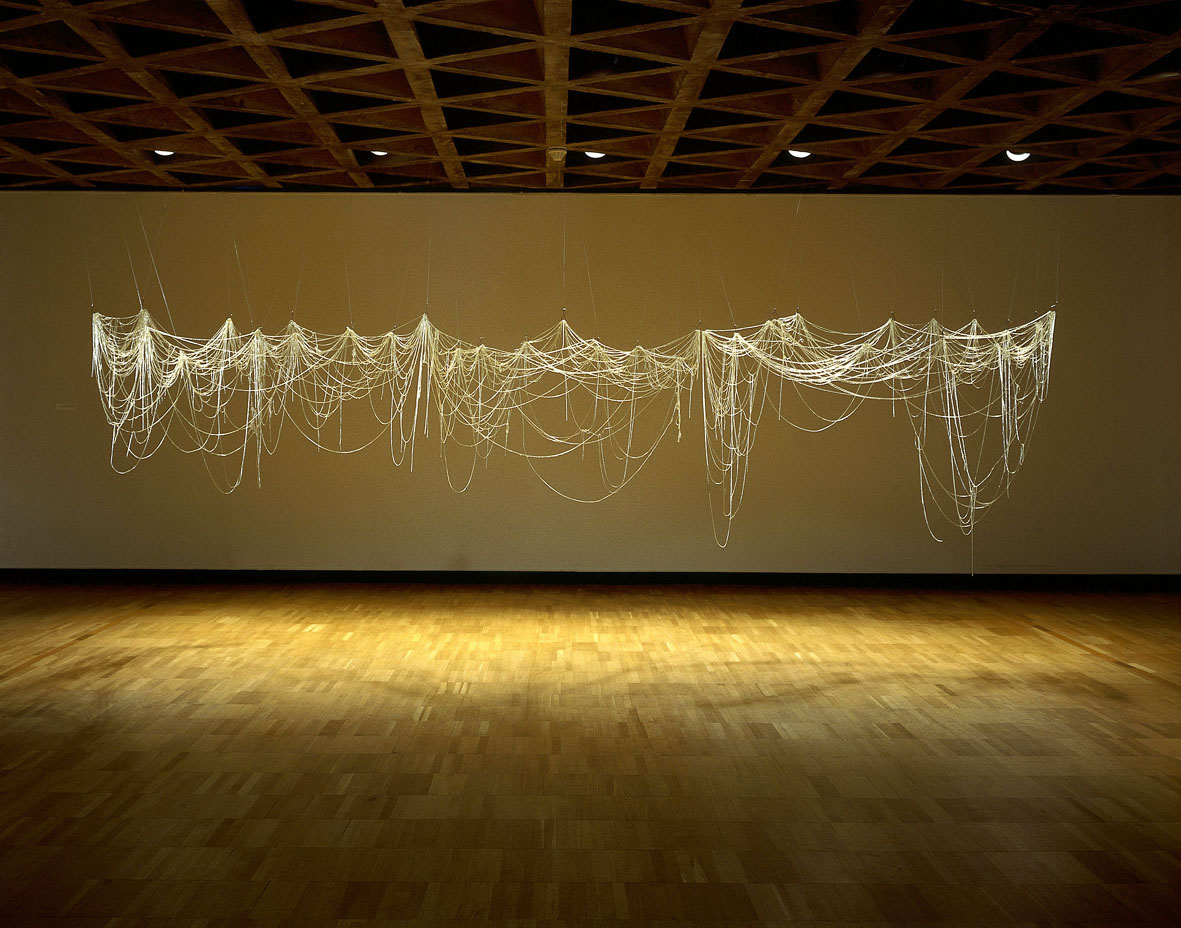Monday
Eva Hesse
Eva Hesse's Sculpture looked in a way like my thread drawings, they looked as though she had not purposely put every piece of rope in place. I feel that all her sculptures just looked effortless. I wanted to try and recreate my thread drawings into 3D, so I decided to use a bigger material, rope and string.
"I remember I wanted to get to non art, non connotative, non anthropomorphic, non geometric, non nothing, everything, but of another, king, vision, sort from a total other reference point. Is it possible?" - Eva Hesse, 1969.
Between 1965-70, she became consumed by a desire to move beyond what was considered sculpture, or, in the parlance of the 1960s, "objects".
She struggled to realize creations of another status, material things in the world that she termed "non-art". "Is it possible?" she asked. By the time Hesse had completed her best-known work - such as the latex and rope piece of 1970 - she seems to have succeeded in producing an object that comes "from a total other reference point."
The artwork is amorphous and strangely beautiful as it hovers between something and nothing, on the borderline of not coming together.
Like many of her late pieces, it looked uncomfortable in the institutional setting where it was first shown, and even now, where it resides.
Hesse's primary means of attaining her artistic goal was an extraordinary sensitivity to the diverse, and often untraditional, materials with which she worked: paint, watercolor, pencil, papier-mache, rope, latex and fiberglass - just a few.
Her control of material could be supreme; she often pushed a given medium to its limits by repeating a process so often that her actions would border on obsessive.
Yet at the same time, she had the ability to step back from a preconceived plan and "allow" abandon to overtake it. Her work emerged from a liminal space between control and freedom, between what she knew and what she couldn't have known in advance, between coherence and fragmentation. The materials' qualities are evident, but Hesse exherted control over the moment of their manufacture, and in these moments she found her non-art.
(Eva Hesse - San Francisco Museum of Modern Art - Yale University Press - New Haven and London - Edited by Elisabeth Sussman)
(Eva Hesse Sculpture - Elisabeth Sussman and Fred Wasserman - The Jewish Museum New York - Yale University Press)



